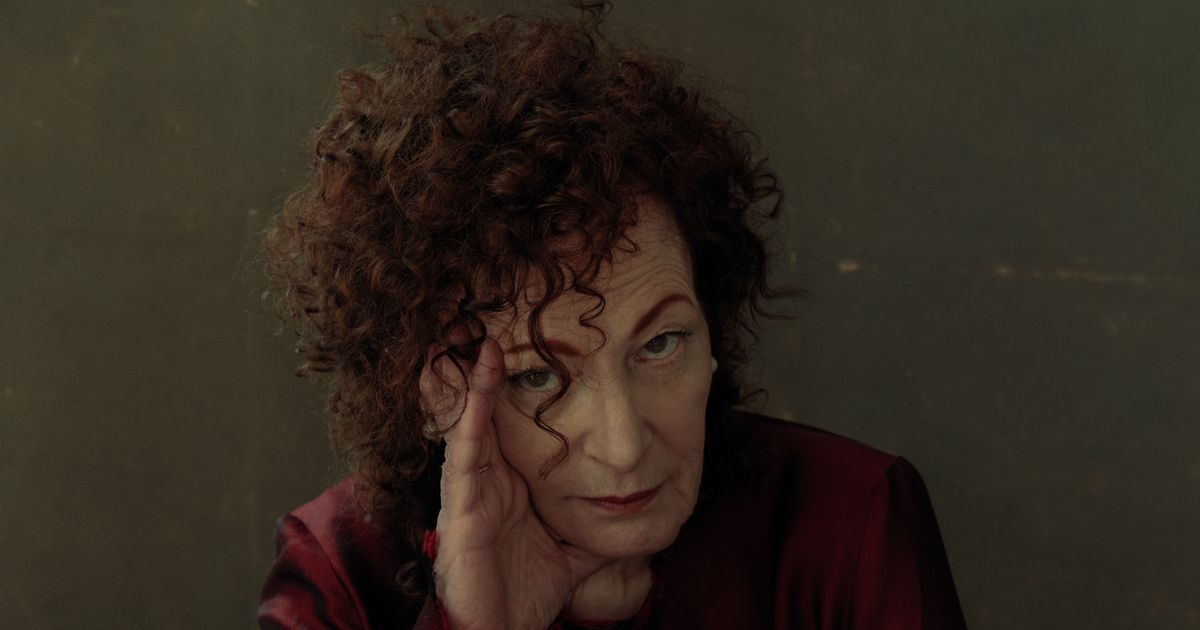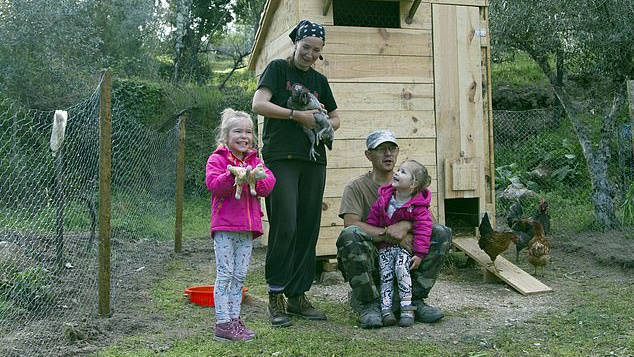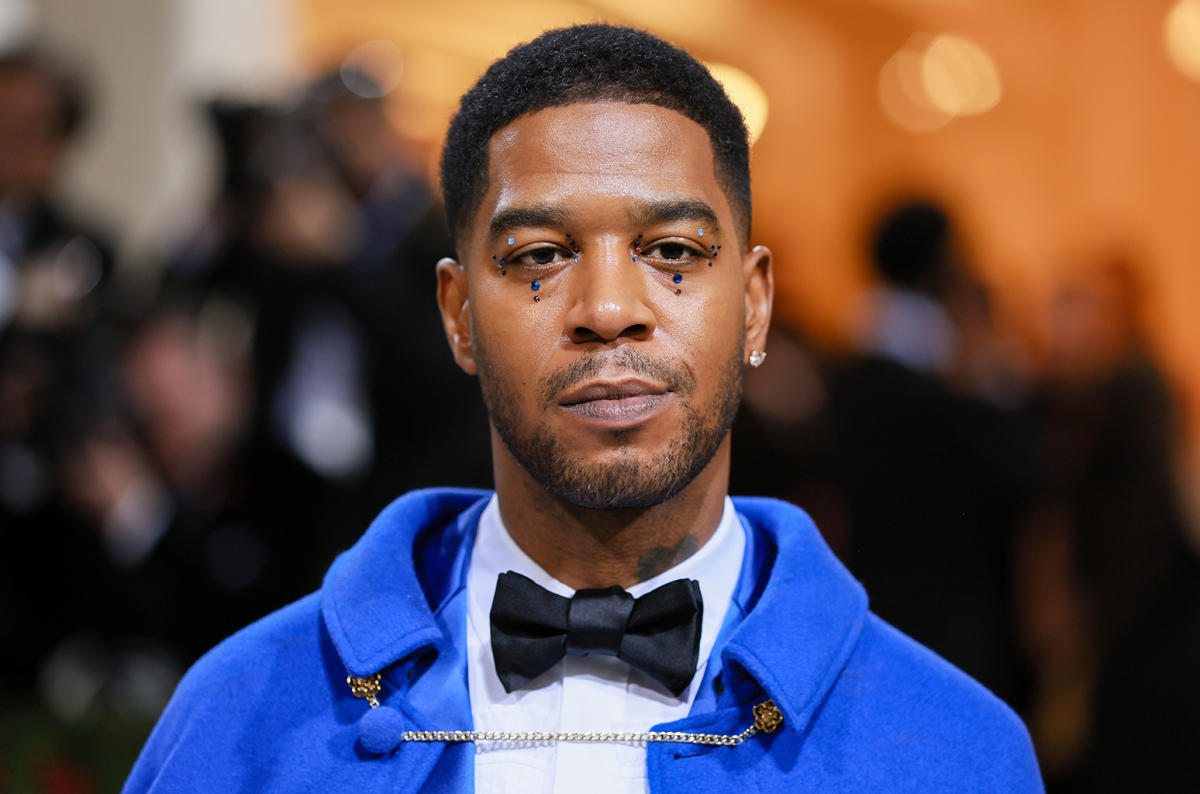
Nan Goldin’s Happy Ending
This article was featured in One Great Story, New York’s reading recommendation newsletter. Sign up here to get it nightly.
My work has always been about making the private public but to a very limited audience,” says the photographer Nan Goldin, ashing an American Spirit. We are sitting in her sunny living room in Clinton Hill, treetops visible through the window. On the coffee table are cans of La Croix on Hilma af Klint coasters from the gift shop at Moderna Museet in Stockholm, which recently showed six of Goldin’s slideshows and video installations in a retrospective titled “This Will Not End Well.” Peter Hujar’s black-and-white portrait of her friend the artist and activist David Wojnarowicz hangs above the mantel.
The show in Sweden (Amsterdam is the next stop) isn’t what’s making Goldin anxious; instead, it’s Laura Poitras’s documentary All the Beauty and the Bloodshed, which tells the intertwined stories of Goldin’s art and activism. The movie didn’t win the Oscar it was nominated for but is now streaming on HBO Max. “Think about if there was a two-hour film about you in the world,” Goldin says. “It’s an ambivalent experience. There’s a lot of good feelings and bad feelings.” She feels in her body the vulnerability of being exposed to such a large audience: “It’s in my skin. It’s not about thinking how people respond; it’s not about worrying about the audience reaction. It’s about my own reaction.”
All the Beauty and the Bloodshed premiered in September at the Venice Film Festival, winning the Golden Lion that now sits on Goldin’s mantel. The film powerfully connects the story of her life — her alienation from her parents’ conformist culture, her sister’s suicide, the bohemian world she documented in her photographs (which was shattered by the AIDS epidemic), and her more recent opioid activism. She founded the group P.A.I.N. on the model of ACT UP to call attention to the overdose crisis brought on by Big Pharma’s marketing of opioids and to fight the influence of the billionaire Sackler family, whose company produced OxyContin; Goldin herself became addicted to it following surgery. The Sacklers are also a very powerful philanthropic family, and fund many of the museums showing her work.
“This Will Not End Well” gives a comprehensive overview of Goldin’s career with thousands of images in nearly two and a half hours’ worth of slideshows with musical accompaniment — this is how she prefers they be shown. “I’m getting old,” she says. “So it’s time to put together my work in a retrospective manner.”
Both the exhibit and the film are exercises in politicizing the personal through the “public disclosure of a private reality,” as Wojnarowicz wrote in the catalogue for the 1989 Goldin-curated group show “Witnesses: Against Our Vanishing,” which included artists affected by, and many dying of, AIDS. The exhibition was one of the flash points in the culture wars at the time, with the National Endowment for the Arts pulling its funding.

Goldin at this year’s Academy Awards.Photo: Thora Siemsen
I’m used to having full control of my work; that’s why the film is strange for me,” Goldin says of All the Beauty and the Bloodshed. “Or difficult for me, ’cause I didn’t have full control” and she can’t go back to reedit it. Poitras did the final cut, though the pair call the project a collaboration.
Goldin granted Poitras several months of audio interviews, during which they came to an agreement that Goldin could redact what she’d said about some of the more sensitive topics. When she previewed a rough cut of it last year, she worked “very intensely” with her assistant, Alex Kwartler, to show her photos “the way they were meant to be used,” she says. “And I made sure that I’m speaking my truth and not someone else’s version, which was the most important thing to me.” She “made a lot of changes” with Kwartler: “Originally, there were voice-overs and all sorts of stuff. I don’t think there was an understanding that the slideshows were pieces unto themselves.” Poitras “did the right thing,” Goldin adds. “She earned my trust. She kept her word.” Even so, Goldin avoided watching the final cut until recently and has no plans to see it on HBO Max.
I didn’t think I cared about the Oscars, but as it was coming up, I got excited.
For a year and a half, Goldin and P.A.I.N. had been producing their own documentary about the Sackler protests and working with another director. But after a 2019 meeting to discuss a different activist project, Poitras volunteered to come onboard. “I’ve always been just really compelled to be able to create historical records in real time,” Poitras tells me.
In an initial conversation with the artist, Poitras said she realized that “Witnesses: Against Our Vanishing” would be central to the film because the NEA controversy was a clear example of “the larger historical parallels and government failures” between the AIDS crisis and the overdose crisis. In both instances, Goldin emerged “on the right side of history despite the risks and pushback in the beginning,” Poitras said. And once she saw a digital version of Sisters, Saints, and Sibyls, a 2004 slideshow about Goldin’s sister, Barbara, she asked if Goldin would be open to including Barbara in All the Beauty and the Bloodshed.
“Had it been just a movie about our work against the Sacklers, I don’t think it would have been that interesting,” Bonazzi said. But Goldin’s life story anchored it in pathos: “The pain that brought her to go out there and shame the Sacklers was on her skin. The message is doubly important and valuable because it’s someone who has lost so much to drugs.” P.A.I.N. organizer Megan Kapler said she hadn’t “ever witnessed someone so willing to put their personal story on the line for a cause.”
The film begins and ends at the Metropolitan Museum of Art, where, on March 10, 2018, Goldin and P.A.I.N. tossed orange plastic bottles into the reflecting pool surrounding the Temple of Dendur and staged a die-in to bring attention to the links between the Sackler family’s name on the galleries, the source of their fortune, and the opioid crisis. One protester in the film carries a tote bag printed with SILENCE=DEATH, the logo of ACT UP.
According to Daniel Weiss, the Met’s president and chief executive, the museum had been quietly deliberating “issues associated with opioids” for several months, and “Nan’s activism, without question, helped to raise the visibility of the issue of opioids and the connection of opioids to cultural institutions through the philanthropy of the Sacklers.” Because the protest didn’t significantly impact either the art or the other visitors, Weiss said, he was “perfectly happy for the museum to be a place where these important issues are being discussed.”
P.A.I.N. considers the film its latest activist project. Just as the group has brought its work to cultural institutions and bankruptcy courts, it discussed the effectiveness of overdose-prevention centers with harm-reduction organizations like VOCAL-NY, Housing Works, and OnPoint NYC in the lead-up to the Academy Awards.
Goldin is a rigorous person to talk with. She challenges you relentlessly by insisting on discipline in your language and concepts, and at other times she veers into critique of millennials. (“All this text talk. People can’t write end of day or thank you? Everything’s abbreviated. And that, to me, is destroying the language.”) She believes the world would be different if thinkers like Wojnarowicz were still here. “The kind of cultural reality that’s been prescribed would not have gone so far if my people were alive,” she says.
She hopes she won’t be canceled “because my language is not your language,” she says. “I think someone tried to read me on Twitter once as being transphobic. Me. One of the first people to ever show and represent trans people in a beautiful way in the ’70s. And somebody just shut them down and said, ‘What are you talking about? Nan is the O.G.’”
Goldin believes that P.A.I.N.’s success came from its solidarity and that progressives need to stick together, especially online. “The least political thing you can do is destroy other people because they didn’t agree with you,” she says, “and it’s just cruel.” With the film offering P.A.I.N. as a blueprint, she hopes to galvanize other grassroots movements. “I think everyone has to get on the street and find their fight. Everyone.” She takes a drag on her cigarette. “It’s really dark times,” she adds, exhaling.
There’s another upside to going mainstream with All the Beauty and the Bloodshed. Even before the HBO Max release, she says, “Kids come to me and tell me — not just kids, adults — that the film really helped them deal with a lot of things: their own histories and the overdose crisis and the Sacklers. I put the work out to destigmatize things” such as drug use and mental illness. “So if it results in that, it’s great.”
On Oscars Night, with her coiffure flawless, Goldin got dressed up in a red gown and black evening jacket. “It was harkening back to the golden age of Hollywood,” she says of the look. Back in the ’70s, when she lived with drag queens in Boston, she recalls, “We were buying gowns we could hardly afford at Goodwill, and now people are making gowns for me.” This one was by Elena Dawson, “a British designer who’s not well enough known,” she explains. “I sought her out. There were a lot of designers who came to me, but I sought her out.”
Throughout the evening, Hollywood types approached Goldin to thank her for her work. “How many films have we seen that directly or indirectly quote Nan’s sense of the look of a person or the mood of a room?” Bonazzi said.
Was Goldin disappointed not to win? “I didn’t think I cared about the Oscars, but by the end, as it was coming up, I got excited about it,” she admits. Winning the Golden Lion meant more: “I found that very elegant because it’s by a jury of intelligent writers and filmmakers and actors. I was really touched by that award and what Julianne Moore said, particularly that it was a unanimous decision as a jury because it touched everyone so deeply. So that was really big for me.”
After the announcement, her team decamped to the “black carpet,” the indoor-outdoor room where smokers congregate. “That’s where we met great people,” she says, like the groups behind nominees EO and All That Breathes, along with her awards-circuit pal Paul Mescal, with whom she hopes to collaborate.
But was she relieved? “The relief is that I didn’t have to give 1 million more interviews,” she says. “If I’d won, I’d have to give a million more. Now it’s quieter.”
Production Credits
- Photographs by Norman Jean Roy
- Hair by Didier Malige for Leonor Greyl at Art Partner
- Makeup by Takashi Ashizawa
Thank you for subscribing and supporting our journalism. If you prefer to read in print, you can also find this article in the March 27, 2023, issue of New York Magazine.
Want more stories like this one? Subscribe now to support our journalism and get unlimited access to our coverage. If you prefer to read in print, you can also find this article in the March 27, 2023, issue of New York Magazine.
One Great Story: A Nightly Newsletter for the Best of New York
The one story you shouldn’t miss today, selected by New York’s editors.This site is protected by reCAPTCHA and the Google Privacy Policy and Terms of Service apply. Vox Media, LLC Terms and Privacy Notice
Related
- ‘It’s a Real Lesson in the Corruption of This Country’

























































